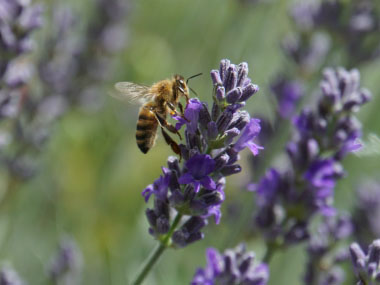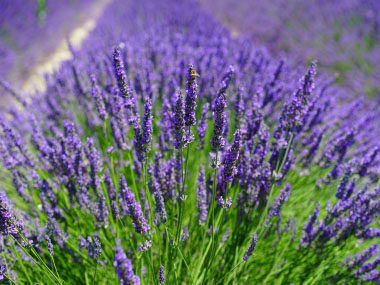





To support our efforts please browse our store (books with health benefits, etc.).
Lavender is a drought-tolerant perennial that flourishes in many gardens. Lavender produces gray foliage and purple flowers, although there are cultivars with pink, blue, lavender, or white flowers. The oil of lavender is a mainstay in perfumery, and the fragrance is widely used in soaps and cosmetics. Flowers for drying must be harvested before opening. There are hundreds of varieties and species of lavender and not all have the same food quality. As a general rule the english lavender has the least amount of camphor, flavour and scent making it best for culinary uses. The spikes and leaves of English lavender can be used in most dishes in place of rosemary in most recipes.
 Fields
of Nutrition has medicinal benefits and vitamin/mineral content of Lavender.
Fields
of Nutrition has medicinal benefits and vitamin/mineral content of Lavender.
Seed Life Cycle
Perennial.
Colours
Purple flowers only on Lavandula angustifolia.
Height
English lavender typically grows between 30 and 90 cm (1 to 3').
Health Benefits
There is no shortage of medicinal uses for lavender. Lavender is a gentle sedative and can help with anxiety, stress and insomnia. It can help to relieve pain from headaches, sprains, toothaches, and sores. Lavender is slightly bitter and many herbalists use it as a hepatic and bile stimulant. It is also carminative and anti-inflammatory.
Dye
Depending on the mordant, is produces pinkish colours.
Recipes
Winter Survival Food Handbook

PDF Plant Magazines
Types of Wild Food
Geographic Zones Seasons
Disclaimer
EdibleWildFood.com is informational in nature. While we strive to be 100% accurate, it is solely up to the reader to ensure proper plant identification. Some wild plants are poisonous or can have serious adverse health effects.
We are not health professionals, medical doctors, nor are we nutritionists. It is up to the reader to verify nutritional information and health benefits with qualified professionals for all edible plants listed in this web site. Please click here for more information.
Why Edible Wild Food?
- Food costs are rising
- Free, wild food is readily abundant
- Wild food adds nutrition to your diet
- Wild food can help treat various medical conditions





